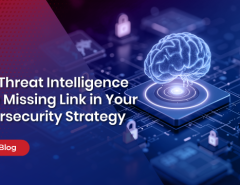Cyber-attacks are constantly posing threats of significant proportions, and it’s important to consider their evolving nature while setting up a response plan. Be it dealing with the growing economic espionage or acts of internal and external corruption; companies often rely on cybersecurity, data loss prevention techniques and pen testing for keeping threats and attacks at bay.
Majority of organizational heads put internal audits to work, for assessing the capability of their organization to manage associated risks and cyber threats. Put simply; an effective internal audit starts off with cyber risk assessment, which in turn offers a concise and distilled summary of lingering threats to the board members. Once the information is out in the open, it becomes easier for the enterprise to draft a multi-year cybersecurity plan.
Revisiting the Role of Internal Audit
Internal audit helps an organization manage the cyber threats, mainly by offering an assessment of essential and existing controls. With simple yet functional threat management questions answered by an internal audit, it becomes easier for the board and even audit committee to address the risks associated with the digital world. If we were to explain internal audit in the simplest manner, we would define it as the process that allocates specific security measures for each one of the existing cybersecurity threats.
The most significant role of an internal audit is that it helps companies quickly assess the effectiveness of a cybersecurity program. The cyber domain comes with a host of alternative threats, like spyware, packet spoofing, ransomware, identity theft and many others. An internal audit assists an organization by reporting the effectiveness of risk management to the concerned authorities or the board. Lastly, internal audits also help an enterprise with compliance issues, disclosure obligations and anything that concerns dealing with the existing threats.
Read more: How to defend your organization’s data on both sides of the perimeter?
Internal Audit: The Third Line of Defense!
Most companies have the first line of defense covered in the form of IT functions and business units. In addition to that, there is also a second line of defense, involving risk management functions. However, the amplified and evolving nature of cyber threats has forced companies to opt for a third line of defense, and this is where internal audits come into the picture. In the wake of catastrophic data losses, high profile attacks and host of regulatory expectations, it is becoming essential for the companies to conduct internal audits. This approach allows them to understand the risks and address the existing issues, often raised by the board or the audit committee.
As the 3rd line of defense, an internal audit can seamlessly collaborate with the management in developing the perfect cybersecurity policy. Apart from that, organizations conducting internal audits can heighten awareness regarding cyber threats and data security loopholes. Lastly, an internal audit assists in monitoring the existing cybersecurity strategy and draft an alternate incident response plan, if required.
Internal Audit: Enlisting the Focal Points
An internal audit simplifies cyber preparedness by concentrating on the five key components or focal points:
1. Protection
The vulnerability of an organization is best assessed by an internal audit which reviews third-party contracts, BYOD policies and other compliance protocols. The audit, therefore, offers valuable information regarding IT governance and various protection efforts for services being offered.
2. Detection
An internal audit is probably the best tool for detecting threats as it leverages data analytics for control monitoring and fraud identification.
3. Business Continuity
Proper planning eliminates the risk scenarios, and an internal audit explicitly focuses on the same, thereby keeping cyber-attacks and natural disasters at bay.
4. Crisis Management
CISOs are answerable to the board and having an internal audit deployed can significantly impact the levels of preparedness when it comes to crisis management, assurance checks and plan developments.
5. Continuous Improvement
An internal audit serves an organization perfectly by offering insights related to the existing cyber threats. Therefore, if the insights are leveraged perfectly towards drafting a functional cybersecurity policy, the concerned organization is bound to improve.
An internal audit is an evolved form of cyber risk assessment which also includes strategies for safeguarding and defending organizations. However, it is essential to deploy skilled and experienced individuals while evaluating the entire cybersecurity framework.
As an IT security partner for your business, Seqrite provides comprehensive endpoint security from advanced cyber threats. To know more, visit our website or




